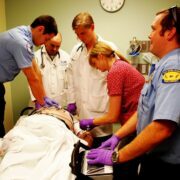The deviated nasal septum is a condition that generally occurs when the nasal septum is displaced to one side. This makes the nasal air passage smaller compared to the passage on the other side of the nose. The condition is rectified or relatively fixed using two procedures, commonly referred to as septoplasty and septorhinoplasty. Dr. Matthew Shawl in New York is an expert in handling deviated nasal septum, individuals who experience this condition are advised to book an appointment with him.
Table of Contents
What Are the Other Problems Associated With Deviated Nasal Septum
The deviated septum may cause issues, which may also lead to certain complications. The problems associated with the condition are:
- An individual may suffer from sleep apnea.
- An individual with this condition may also experience excessive snoring.
- Some encounter some difficulties in breathing.
- Some are associated with excess nose bleeding.
- Individuals may also suffer from congestion and other infections.
Some severe cases may lead to surgery, especially if the condition is not well handled. An aging person may experience severe complications associated with the condition. This is simply because their nasal structures change over time. The deviated nasal septum also tends to change with time, causing the symptoms to become severe.
What Are the Common Signs and Symptoms of Deviated Nasal Septum?
The following are the signs and symptoms that are commonly associated with the condition:
- A patient experiences obstruction of one or even both nostrils. The obstruction makes it difficult for a patient to breathe through the nostrils.
- Excessive nose bleeding is also a common and significant sign.
- Some individuals may also experience some sharp pain in the face.
- Some have stiff and noisy breathing, especially when they are asleep.
- Some tend to prefer sleeping on one side.
These are the signs and symptoms associated with the deviated nasal septum, and an individual who experiences them should visit a doctor immediately.
What Are the Treatment Procedures for Deviated Nasal Septum?
In exceptional circumstances, medication can help relieve signs and symptoms associated with the condition. Medication helps in improving alignment and within the breathing passageways. The other two standard procedures used in treatment include:
Septoplasty
This procedure generally involves the removal of excess bone and cartilage from the septum. This improves the passageway of the air; which allows the air to flow straight into the nose since the septum has been straightened.














Comments